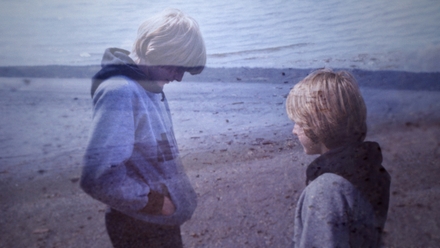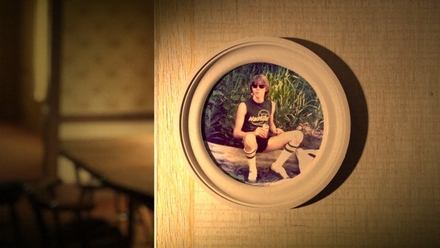This authorised film about the life of Nirvana frontman Kurt Cobain sifts through his personal and family archive to create a gripping and unflinching portrait of a talented man undone by success and personal demons.
One of rock’s great Christ-figures gets his own creation myth laid bare in this remarkable documentary by Brett Morgan. It’s a compelling and disturbing watch that will leave naysayers and detractors in no doubt that Kurt Cobain, in the words of one of Nirvana’s forebearers, The Sex Pistols, really did mean it maaaan.
Taking its title from a gonzo mix tape of surreal comedy, snatches of music, and voice recordings made by Cobain on a 4-track in 1988, Morgen has excavated 200 hours of unreleased music and audio, artwork, and more than 4,000 pages of Cobain’s writings to tell the tale.
One of the first glimpses we see of Kurt is in home movie footage of an angelic golden-haired, two-year-old in his parent’s backyard on a sunny day in Aberdeen, on the US’s Pacific Northwest. Then he is blowing out the candles on his birthday cake or dressed as batman in his local neighbourhood. The question hardly needs asking - how did this seemingly happy kid become the reluctant, 'voice of his generation'?
By his early teens, Kurt's family life was in disarray. Shunted from his divorced mum to dad, step dad to step mom, and then onto his grandparents, by aged fifteen, he was experimenting with drugs and pouring his creativity into his art - his Bosch-like drawings becoming darker and darker - and baptising himself with the cleansing power of punk rock.
These are Montage of Heck’s most fascinating moments but there are also extensive interviews with friends and family. Cobain’s mother Wendy O’Connor, the woman who coined the phrase 'the stupid club' when her son committed suicide at the tragic number of 27 in 1994, is frank about her lost boy but Cobain’s father Don, an unknown quantity, still seems numbed and confused.
Even at a 21-year remove, there is a huge sadness as they grope for an understanding, but the most moving and most illuminating interviewee is Kurt’s first serious girlfriend, Tracy Marander. She was the ordinary small town girl who supported the slacker Kurt as he sat around at home playing guitar and concentrating on his art.
Nirvana bass player Krist Novoseclic pays tribute to his old friend but drummer Dave Grohl did not contribute while the absence of Kurt’s daughter, Frances Bean, who is the co-producer of Montage of Heck, can be explained by the fact that she hardly knew her father.

The teenage Kurt
Morgan has compared his film to Boyhood and it does trace one boy’s life from infancy to troubled adolescence and tormented adulthood but in terms of technique, Montage of Heck owes a lot to Julien Temple in its use of contemporary TV footage, vintage advertisements and grainy home movies.
And just like Kurt’s mix tape, it’s constantly moving with collages of art, animation, snatches of phone conversations and words racing and dancing across the screen - all to an atonal and loud barrage of early Nirvana music. At one point, one of Kurt’s countless lists of potential band names is crossed out before he announces in bold caps, '. . . and the band’s name will be NIRVANA’.

Been a son
Inevitably, Morgan’s film is utterly compelling for the first hour before we enter into the already well-documented story of Kurt and Courtney Love's Sid 'n' Nancy junkie limbo as Nirvana fled fame after the epochal success of Nevermind. The home movie scenes of the couple and the infant Frances are tender but even then, Kurt is strung-out and hardly there; tellingly, in his journal entries he spells the word 'heroin' as 'heroine'.
The film ends abruptly and inevitably in March 1994. Morgan does not engage with post mortems and questions of legacy but bewilderingly, neither does he examine Nirvana’s actual music to any great extent.
No rock star has inspired such devotion and pure belief since Cobain and just like Nirvana’s music, Montage of Heck is both very powerful and very sad.
Alan Corr

